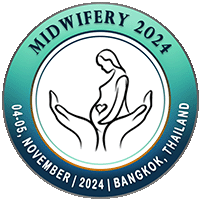8.jpg)
Mohamed Hosni
Consultant London North West University Hospitals, United KingdomTitle: The Art of Kielland rotational forceps delivery. Do we need more training, or should we abandon it? That is the question.
Abstract
There has been a wide variation in obstetric practice in the management of women at full cervical dilatation with malposition of foetal head, with many obstetricians preferring delivery by caesarean section rather than attempting instrumental vaginal delivery. This could be attributed to scarcity of published data about the safety and feasibility of Kielland’s forceps as method of rotational operative vaginal delivery. The aim of this study was to assess the potential benefits and harms imposed by Kielland’s forceps in comparison to other methods used to assist mid-cavity rotational vaginal delivery; manual rotation and rotational vacuum extraction. Seventy-two women, who underwent rotational Kielland’s forceps vaginal delivery were compared to Sixty-nine women who had other rotational delivery: 42 rotational ventouse and 27 manual rotations, from October 2015 to October 2019. Statistical analysis was performed using the IBM SPSS Statistics for Windows, version 28.0. The results showed 36.2% of the women had maternal complications, however, neither Kielland’s forceps nor rotational ventouse exert any significant effect on developing maternal complications compared to manual rotation (P>0.5) with only one case of perinatal death in Kielland’s Forceps group. There were no maternal deaths, no thromboembolic events, and no laparotomies or hysterectomies in any of the three groups. Kielland’s forceps will remain the method of choice for rotation operative vaginal delivery. However, acknowledging and accepting the associating risks and complications, and obtaining an informed consent from pregnant women is essential before embarking on such procedure.

